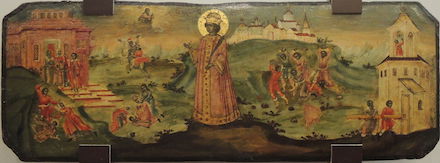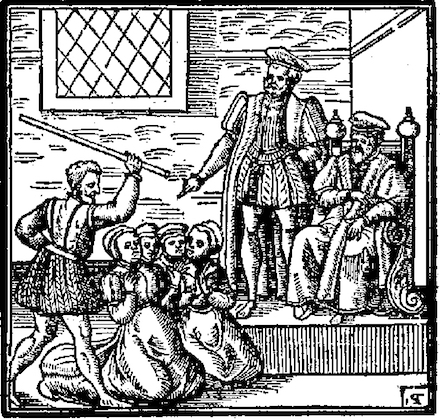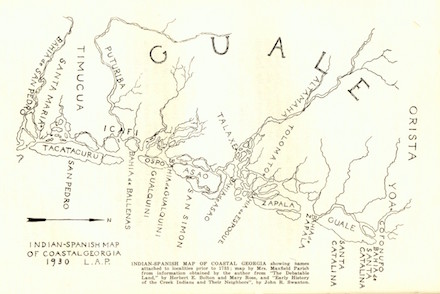Concerning, The bloudy enterprise, which by him should have bene committed upon the person of County Maurice, Prince of Orange, as also, The sentence denounced against hym for that déede, in the Haghe on the third of June 1594.
Printed at Utrecht, by Salomon de Roy, ordinary Printer of the Estates, in their language, and now truely translated into english by R. R.
LONDON Imprinted by John Wolfe. 1594.
Michael Renichon of Templeu, and Parson of Bossier in the County of Namur aforesaid (dispatched with Letters of the Earle of Barlaymont, in the habite of a Souldier, from Brussel, the tenth day of March last:) was by Convoy conducted thence to Louen, Diest, Herentals, and Tuernoult: from whence accompanied onely with one of the garrison of the sayd Towne, he was guided to the Towne of Bredau: where being entred, he delivered certaine close sealed Letters, unto the Governour there, which were addressed from the Earle of Barlaymont unto Captayne Larigon Commaunder of the Castle of Tuernoult, importing, that the bringer thereof, was sent thither by expresse commaundement of Archduke Ernestus of Austria, to communicate unto him a certaine enterprise, to be done upon the towne of Bredau.
The Gouernour desirous to be by him further instructed, as well of the cause of his comming thither, as of the particularities of the said enterprise: Renichon first humbly besought him, that it would please him to entertaine him into his service, and then, persisting (though differing and dubling in his assertions, which savored of manifest untruethes) that his matter was just and perfect: Affirmed, that for certaine yeares, he had bene Secretary to the Abbot of Malonne, and for his knowledge and experience, he was by him advaunced to the same place, with the Earle of Barlaymont: from whome hee had after thys manner withdrawen himselfe, onely for the fervent desire hé had to doe him service, with such other the like accomplements.
The Governour finding small probability in hys filed speeches, feared greatly some pretence of waightier matter: and for that cause, caused him forthwith to be conveighed to the Haghe: Where, upon the first of Aprill, (fearing what would ensue) he attempted to strangle himselfe with a corde made of points and stringes of his Armes, fastened to a certayne iron in the Gaole, under which he was found all be blouded, and speechlesse.
Revived now, and come to his speech agayne, one demaunded for what cause he would have committed this acte upon himselfe: whereunto replying, hee confessed volontarily, without proffer of any torture or constraint, as well by word of mouth, on the second of Aprill, as also afterward by his owne hand writing at sundry times, as namely on the twentieth day of Aprill, and last of May, the very absolute trueth of hys comming thither: affirming the speeches uttered by him and fathered uppon the Abbot of Malonne, and Earle of Barlaymont, to bee false and forged, acknowledging further.
That having had long processe in Law against his Parishioners of Bossier, touching the revenues of his Parsonage: as also endamaged through the dayly incursions of the unbrideled souldiours: he was enforced by meere necessity about some two yeares sithence, to abandon his Parsonage, and committing the cure thereof unto a Chaplaine, retired himselfe unto the Towne of Namours, where he supplied the roome of a Scholemaster.
The Earle of Barlaymont, having had some intelligence of my being there, entreated me by some of hys gentlemen, on an Evening to suppe with him: supper being ended, the Earle retired himselfe into hys Chamber, and commaunded me to bee brought in to him: where (his people withdrawen) he asked me how I could with so small allowance content my self, and spend my time, to so little proffite, adding further, that hee knew the meanes how to advaunce my estate, if eyther I would seeke it at his handes, or rouse and plucke up my appaled spirites, for which his honourable courtesies, humbly thanking him, I presented him my best service.
The which now presented, hee tooke occasion to send for me in February last past, by his Chaplaine after supper, falling in discourse with me, in the presence of some other, of an enterprise to be done upon the Towne of Bredau.
Likewise at an other time being entred into his Chamber, he sent for me againe, at which time he tolde mee, that hee was to communicate unto me a matter of greater consequence and importance, and that if I would employ my selfe in the service of the king, he would richly and royally recompence me. Uppon which promise, I vowed my service to him againe.
Not long after this, I was by him commaunded to follow him to Brussels, where the sayd Earle divers and sondry times frequenting the Court, at length commanded me to attend on him thither: with whome passing from chamber to chamber, at last, the Earle entred the chamber of the Archduke Ernestus: whom I then beheld, minding to follow after hym: at which tyme I was partly hindered by the suddaine falling too of the doore: which not fully shut, (listening what might passe betwéene the Archduke and the sayd Earle,) I easely heard them speake Spanish and Latine: and at sundry times, make repetition of recompence and reward: The Earle ready to take hys leave of the Duke, who brought him to the chamber doore: the Duke at his last farewell, sayd, Cumulate & largo foenore satisfaciam. When the Earle returned, he told mee, that they had all that time, conferred about my matters: and that the Archduke had ordained two hundred Phillips Dollors to be delivered me.
Retired now to his lodging, he gave me further to understand that the Archdukes pleasure and full intention was, to roote out, or by a third hand violently to murther the Counte Maurice of Nassau: and for that end and purpose, he had already dispatched certaine other persons, assuring me, that if I would likewise undertake the like action, it should be great advauncement for me and all my fréendes: saying further, that there were allready fiftéene thousand crownes gathered together, to bee disbursed to him, that first should bring to passe the foresaid massacre or murther.
Uppon this point I aunsweared the Earle, that it was an action méerely impertinent to my profession, who had never borne armes: he replied that it was the will and pleasure of the king, and the commaund of the Archduke, and therewithall, fell to perswading me agayne wyth many vehement reasons, in such sort, as I promised to do my uttermost endevor to that ende.
Thereuppon I desired the said Earle, to instruct mee how I might behave my selfe in this enterprise: hee aunsweared, that the Counte Maurice being a yong noble man, very familiar and popular, it were a very easie matter to insinuate himselfe in hys favor: that it must not bee wrought in hast or rashly, but wyth great advise and leysure, That he was to make hys repaire into the Haghe, or such other place where the Counte were most restant: that there, he should under the coullour of teaching a common schoole, expect and waight for the comming of such other as were assigned to the like ende and purpose (whereof there were six and he was the seaventh, who taking advise and councell together uppon one observation made, might easely woorke the depth of their desire: advising me further, that I was to provide my selfe of a paire of good Pistols, with firelockes, the which (biting carefully and clenly kept) I should charge with two or thrée bullets, and upon the first occasion proffered, should shoot through the said Counte, or otherwise murther hym by what devyse or practise I either best could my selfe: or the other which yet were to repayre unto me. In conclusion affirming, that hee who best and first behaved himselfe in this action, should be best and first rewarded.
That there were also other, which were to be made away by like practise, videlicet, Barnevelt, Longolius, and S. Allegonde: of whome, or any of them, if he could procure their death and destruction: he should bee richly likewise recompenced, charginge him especially to alter his name, and to apparell himselfe souldiorlike for this purpose.
These and such other exhortations ended, the Counte Barlaymont caused certayne other persons to bee brought into my presence: of whome, he said that one of them, was of the six above mentioned: to whome he declared that I was lately adopted into their fellowship: upon which spéech, the said party embracing me, called me his Camerado: assuring me that in short time, he would follow me into Holland, for and upon the like occasions.
The said Countie further declared, that the sayde sixe persons are, and have bene ever since the death of the Prince of Parma, and before, notorious murtherers, and that they are allowed gentlemens pay in the Court there, by the King, and uppon any such desperate action, are onely and ever employed against the ennemy.
Thus retyring himselfe from our company, he dispatched hys Secretary incontinently to Stephen de Narra, of whome he received in sundry kindes of quoyne, the foresayde somme of two hundred Dollars, the which was presently by him delivered me.
Being now furnished of all things expedient for my iourney, and ready to depart from Brussels to Andwerpe, I was by one of the sixe persons above mencioned, conducted to the Schuite, who at my very departure signified unto mee, that hee assuredly hoped to have borne me company to Leiden: of whom demaunding where that was, and to what ende: hee aunsweared me, that Leiden was a Towne and an University in Holland, wher the younge Prince of Orange studied, whether hee should likewise be employed, to the intent that insinuating himselfe into his favor, he might with better conveniency bereave hym of hys life.
Thus resolved to obey the Counte of Barlaymonts pleasure and commaund, I first cloathed my selfe souldierlike, named my selfe Michil de Triuier, and arrived at Andwerpe with the forsaid Letters of the County of Barlaymont, addressed to Largion, where (understanding that he was upon occasions departed from Tuernault) I was enforced to alter my course, and returned to Brussels againe: where receiving other Letters of the foresaide County, tooke my way to Louen, Diest, Herentals, and Tuernault, from whence as aforesaid, I came to Bredau.
The generall Estates of the united Provinces of the Low-Countries, duely examining the state of this cause, finding it a matter of very evill example, as also, that in a Country of Justice, where all daungerous and perillous actions and eventes ought to be prevented, and the peace and tranquillity of the same highly preferred and advaunced, estéemed it in their wisedomes a matter not onely not tollerable, but rather severely to bee punished, to the terror and example of all other: and thereuppon have condemned and adjudged, and doe by these presentes condemne and judge the Author of this intended murther, to be presently conveighed from hence to the ordinary place of execution, and there to be beheaded with the sword: and afterwardes, hys body to be quartered, his head to bee put uppon a pole, and the quarters hanged on the foure corners of the Haghe, declaring further his goods to be confiscated.
This was pronounced in the Audience of the Court of Holland, the third of June 1594. And Signed
Nievelt.
Under that was written, The Decree of the foresaid Councel. And was subscribed.
J. van Zuilon.
On this day..
- 1453: Loukas Notaras, Byzantine
- 1861: Melchor Ocampo, liberal statesman
- 1946: Chen Gongbo, puppet president
- 1898: James Fleming Parker
- 1691: William Fielding, scammer
- 1850: Five Cayuse, for the Whitman Massacre
- 1886: Twenty-two Uganda Martyrs
- 1918: Aloïs Walput, grenadier
- 1955: Barbara Graham, of "I Want to Live" fame
- 1395: Ivan Shishman, falling to the Turks
- 1098: Yaghi-Siyan, commander of Antioch
- 2004: Nam Cam, Vietnamese crime lord


 Dangerous to bystanders, this mob was impotent against the Russian state. Boris Godunov dispatched a delegation that whitewashed Dmitry’s murder and ruthlessly punished Uglich; some 200 are reported to have been put to death for the disturbances.
Dangerous to bystanders, this mob was impotent against the Russian state. Boris Godunov dispatched a delegation that whitewashed Dmitry’s murder and ruthlessly punished Uglich; some 200 are reported to have been put to death for the disturbances. 

 Despite the title, the text within that volume
Despite the title, the text within that volume 

